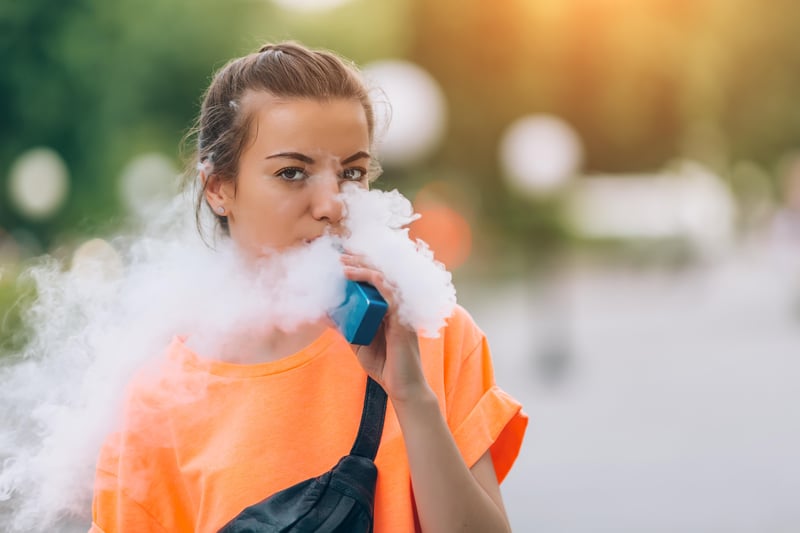Due to a recent change in our pharmacy software system, the process for submitting refill requests online has now changed.
Our previous mobile app and your current login credentials will no longer work.
Please click the Refill Prescriptions tab to begin the new process.
Thank you for your patience during this transition.
Now offering hormone and vitality management consults!
Call 706-886-3119 for more information.
Get Healthy!

- Amy Norton
- Posted September 21, 2022
U.S. Teens' Drinking, Smoking Declines While Vaping & Pot Use Keep Rising
Fewer U.S. teenagers are drinking and smoking these days, but marijuana and vaping have gained in popularity -- particularly among kids with lots of unsupervised free time.
Those are among the findings of a new study tracking substance use trends among American teens over the past 30 years.
The researchers found that while substance use has generally declined over time, there were two notable exceptions: marijuana use, which has been inching up for many years; and vaping of nicotine and marijuana, which has surged in the past several years.
The vaping trend is especially striking, said lead researcher Noah Kreski, of Columbia University Mailman School of Public Health, in New York City.
"It soared in just three years," Kreski said.
Between 2017 and 2019, the percentage of U.S. teenagers who said they'd vaped nicotine in the past month rose from 7% to 17%, the investigators found. The relative increase in marijuana vaping was even greater -- from just over 3% to almost 10%.
Marijuana use in general has also risen since the 1990s -- in contrast to teenagers' use of other drugs, such as tobacco and alcohol.
It's not clear why from the study, but changing social norms around marijuana are one likely reason, according to Kreski.
Not all teens have an equal likelihood of substance use, however. It turns out that the way they spend their out-of-school time makes a big difference.
Regardless of the type of substance use, rates were highest among teenagers who had a job or who spent a lot of time with friends, without adults around.
On the other hand, substance use was least common among kids who did not socialize much or who took part in structured activities, like sports.
In fact, changing patterns in how kids spend their free time may help explain the decline in most types of substance use, the findings suggest: Compared with their predecessors in the 1990s, teenagers today "party" less often and are less likely to have a part-time job.
Beyond that, education and other efforts to prevent teen substance abuse have improved over the years, according to Linda Richter, vice president of prevention research and analysis for the nonprofit Partnership to End Addiction.
Still, it's not surprising that vaping and marijuana use have risen in popularity, said Richter, who was not involved in the study.
She pointed to "the forces of commercialization and normalization of cannabis [marijuana] and vaping that hit the youth population in recent years."
"There's now concrete evidence that the vaping industry targeted young people in their marketing efforts via sweet-flavored products, cool device designs and a persistent message of low-risk," Richter said.
The cannabis industry, she added, is following suit, with vaping products and edibles that are marketed as benign.
The new findings, published Sept. 21 in the journal Substance Use and Misuse, come from an ongoing, nationally representative study tracking U.S. teenagers' alcohol and drug use. Kreski's team focused on over 530,000 teens who answered survey questions between 1991 and 2019.
Over those 30 years, about 27% of kids said they'd had alcohol in the past month, while about 15% and 13% said they'd smoked cigarettes or used marijuana, respectively. Around 9% said they'd used "other drugs."
The patterns over time differed, however: Most substance use peaked in the early- to mid-90s then dropped off, while marijuana use rose.
One thing was consistent: Across time, teenagers involved in sports and other structured pastimes were less likely to report using any substances -- especially if they were not socializing much outside of those activities.
In contrast, kids who socialized a lot without supervision generally had the highest rates of substance use: They were about seven to nine times more likely to report using marijuana, smoking or drinking, versus teens who devoted their free time to structured activities.
"Years of research show that when young people are engaged in activities they enjoy and feel are meaningful, they have less reason to turn to substance use to soothe their boredom or seek sensation," Richter said.
None of that, however, means that free time is bad, or parents need to watch their kids like hawks.
"Teenagers need the freedom to grow and explore," Kreski said. "If you monitor them 24/7, you might deprive them of positive experiences."
Instead, parents should bring up the issue of substance use, and let their kids know they can come to them with questions, according to Kreski.
Richter agreed. "These findings do not indicate to me that parents should over-schedule their children," she said.
Instead, Richter added, they point to the importance of parents "being present for their children."
"Despite what many parents think," she said, "they do remain one of the most important influences over their children's attitudes and behaviors when it comes to substance use."
More information
Partnership to End Addiction has advice on talking to teens about substance use.
SOURCES: Noah Kreski, MPH, data analyst, Columbia University Mailman School of Public Health, New York City; Linda Richter, PhD, vice president, prevention research and analysis, Partnership to End Addiction, New York City; Substance Use and Misuse, Sept. 21, 2022, online

